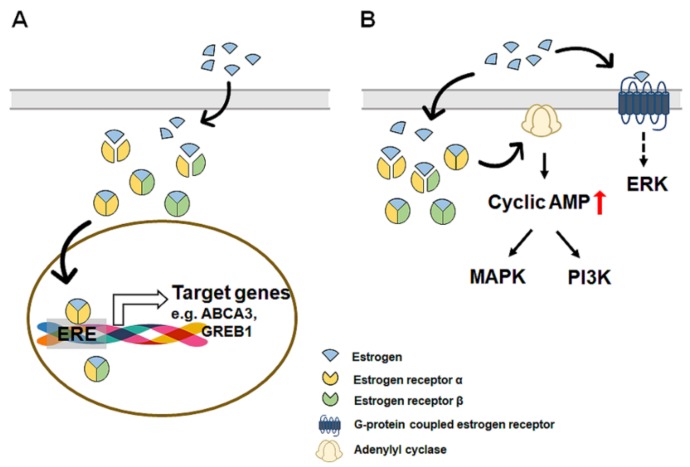Figure 1.
A simplified diagram of estrogen signaling pathways, including genomic (canonical) and nongenomic (non-canonical) pathway. The intercellular effects of estrogen are mediated by two main pathways: genomic (canonical) and nongenomic (non-canonical). In the genomic pathway (A), estrogens (blue colored) bind and activate two nuclear receptor isotypes, estrogen receptor α (ERα, colored with yellow) and estrogen receptor β (ERβ, colored with green). Binding of estrogen with ERs in the cytoplasm induces homo- or heterodimerization of ERs, and the complex of estrogen and ERs translocate to the nucleus where it binds to specific DNA sequences, known as estrogen response elements (EREs), and regulates the transcription of target genes, such as ATP binding cassette subfamily A member 3 (ABCA3) and growth regulation by estrogen in breast cancer 1 (GREB1). In the nongenomic pathway (B), estrogens activate several signaling pathways without direct interaction with DNA. Estrogen rapidly increases the level of cyclic adenosine monophosphate (cAMP) by activating adenylyl cyclase and mediates intracellular signaling transduction, such as the mitogen-activated protein kinase (MAPK) and phosphoinositide 3-kinase (PI3K) pathways. Estrogens also bind to G-protein coupled estrogen receptor (GPER) at the plasma membrane and mediate the activity of extracellular signal-regulated kinase (Erk).

